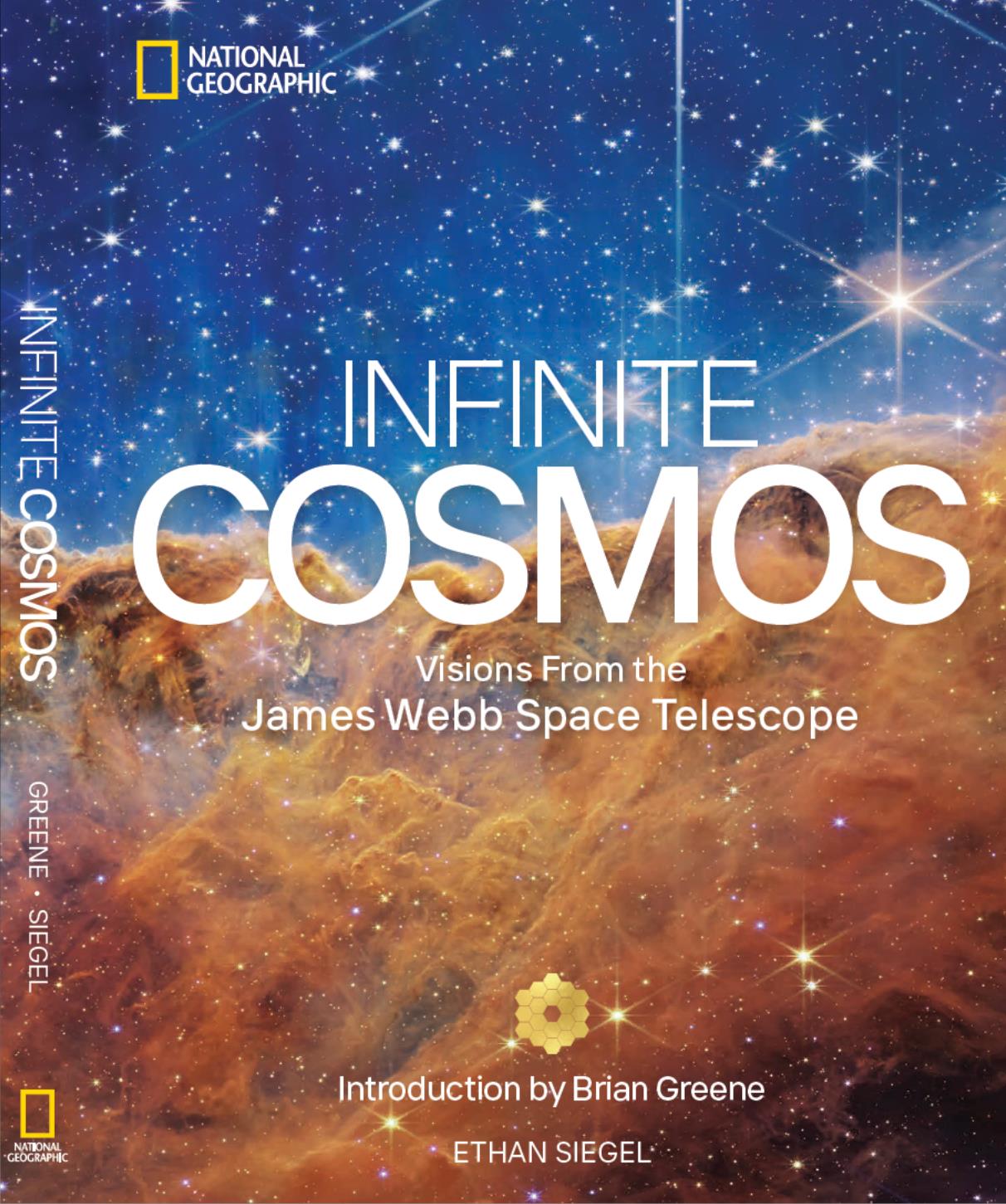Why Is Uranus The Only Planet Without Interesting Features On It?

All the other planets have craters, icecaps, clouds, or a rich, banded structure. But not Uranus.
The eight major planets of the Solar System all possess their own unique features. The rocky planets have craters, ridges, mountains and more: evidence of a violent past and interior activity. All the planets except Mercury have atmospheres, where volatile materials form clouds and hazes. On the gas giant worlds, banded structures, storms, and turbulent streams are commonly seen. Jupiter, Saturn, and Neptune all display spectacular changes over time whenever we’ve examined their atmospheres in detail.
But not Uranus. Alone among all the planets in the Solar System, Uranus is a light, blue-colored, otherwise featureless world. Even when it was visited up close by the Voyager 2 spacecraft, the most remarkable part of the story was how unremarkable Uranus appeared. To the human eye, Uranus is the only planet without interesting features on it. Here’s the scientific story of why.
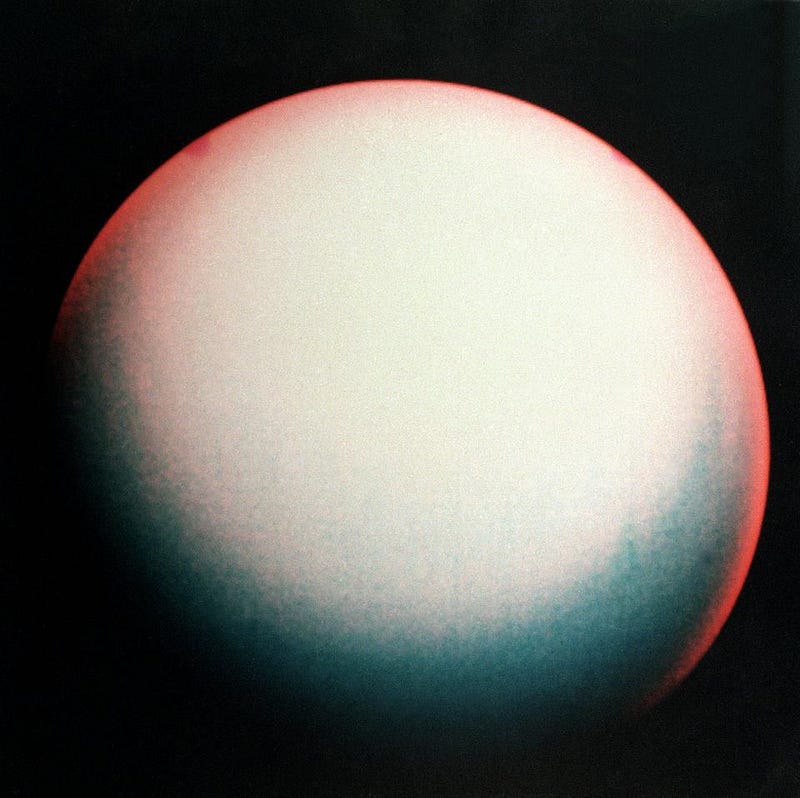
Uranus, as seen from Earth, is just a tiny turquoise disc. Voyager 2, which had previously revealed unprecedented details of storms and bands on Jupiter and Saturn, saw a large, featureless, turquoise globe when it came to Uranus. Even by turning up the image contrast as high as possible, there was practically nothing to see. Uranus appeared to be, quite disappointingly, the most boring planet we could have imagined.
Initially, we thought we understood why it was such a featureless world. With such a small size relative to Saturn or Jupiter, it was conjectured that Uranus wasn’t able to generate any of its own internal heat, and was therefore only at the temperature you’d expect if it were heated by the Sun. It was blue and featureless because it was cold, distant, and didn’t produce its own heat. Its upper atmosphere was a constant 58 K. And that seemed to be the entire story.
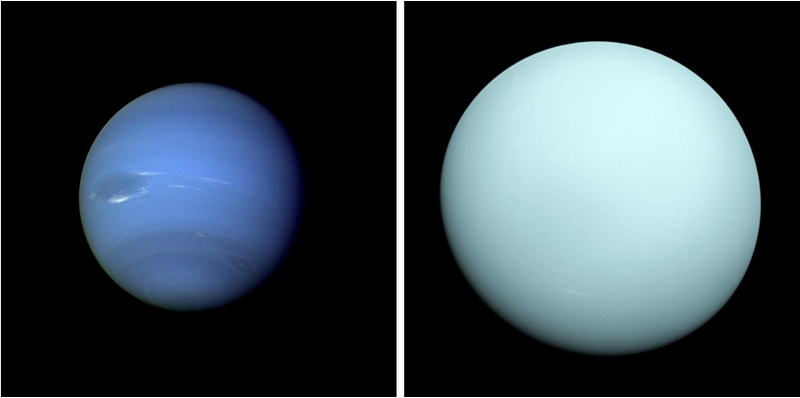
Of course, that isn’t the case at all! Sure, it is cold and distant, and doesn’t generate very much internal heat; that part is true. But Uranus is unique among all the worlds in the Solar System for a special property it possesses: its rotation. Unlike all the other worlds, which rotate at some tilt relative to the plane of the Sun’s rotation, Uranus is practically on its side, rolling like a barrel instead of spinning like a top.
When the Voyager 2 spacecraft flew past Uranus in 1986, it was solstice: the side illuminated by the Sun was one of Uranus’ polar regions. But as the years and decades ticked by, Uranus moved from solstice towards equinox, when its equatorial region would be illuminated by the Sun instead. Instead of a constant influx of sunlight on one hemisphere, lasting years, there was a rapid day/night shift, coincident with Uranus’ rotational period of about 17 hours.
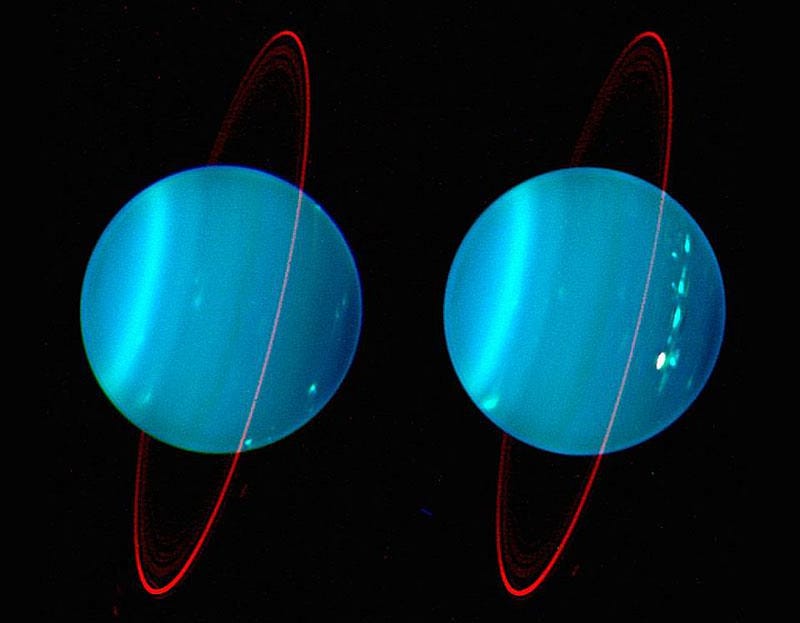
Since Uranus takes 84 Earth-years to complete a revolution around the Sun, that means it takes 21 Earth-years to go from solstice to equinox. With Voyager 2 flying by it at solstice in 1986, that implied the best time to view it next would be in 2007, when it was at equinox. We didn’t have another mission ready to go at that time, but we did have the Hubble Space Telescope.
As you can see, above, there are all the features you would have hoped for the first time. There are swirling clouds, storms, and even characteristic atmospheric bands. There are dark spots and light spots, hazes and clear regions, with differential colors at different Uranian latitudes. Instead of a monochrome, featureless world, we at last found the active atmosphere we had expected all along.
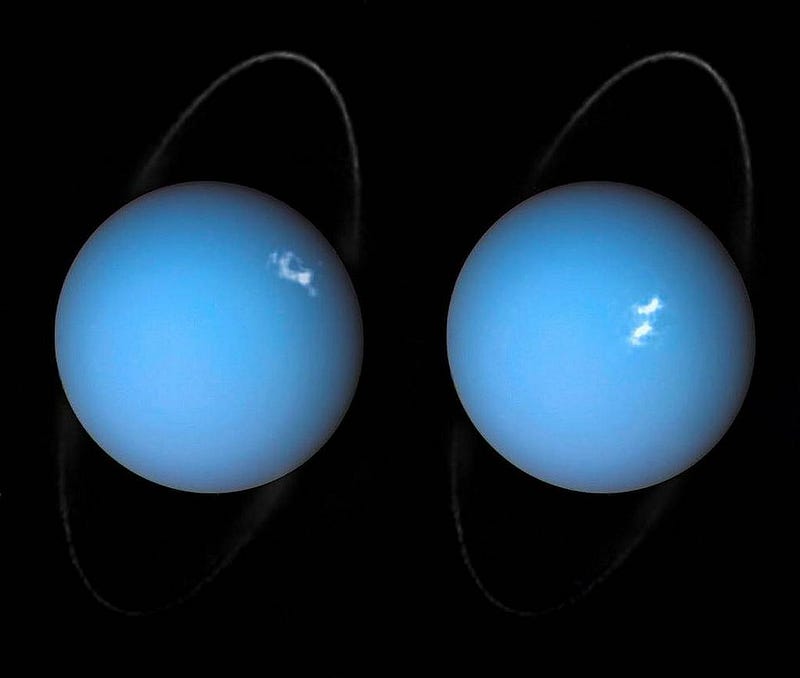
The reason for Uranus’ uniform color during the solstice is because of its temperatures when it’s in continuous day, which produces a haze of methane. Methane, in this state of matter, absorbs red light, which is why the reflected sunlight takes on that turquoise hue. Simultaneously, the methane haze masks the clouds below it, which is what causes Uranus to have the featureless appearance we came to know ubiquitously after the Voyager 2 visit.
With its 97.7° degree axial tilt, a solstice Uranus will appear to be a boring Uranus. But that methane haze, so prevalent in the upper atmosphere of Uranus, only represents the top 1% of the atmosphere. Observing in bands other than visible light will reveal even more of its non-uniform properties.
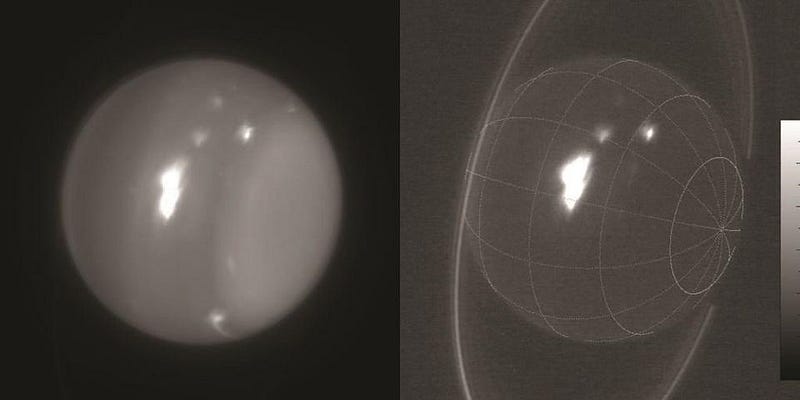
Because an equinox-like Uranus will cool off during the night, the methane haze goes from being a top-layer aerosol — which is a solid or liquid particle suspended in a gas — to particles that mix with the lower atmospheric layers. Thus, when day emerges again, the uppermost layer is partially transparent.
And what we’ve found, when that occurs, is that there are observable changes in the upper atmosphere, which holds clues to the 99% of the unseen atmosphere beneath it. There are storms that are present even in the old Voyager 2 information, visible only by stacking over 1,000 images together and looking for variations between frames.
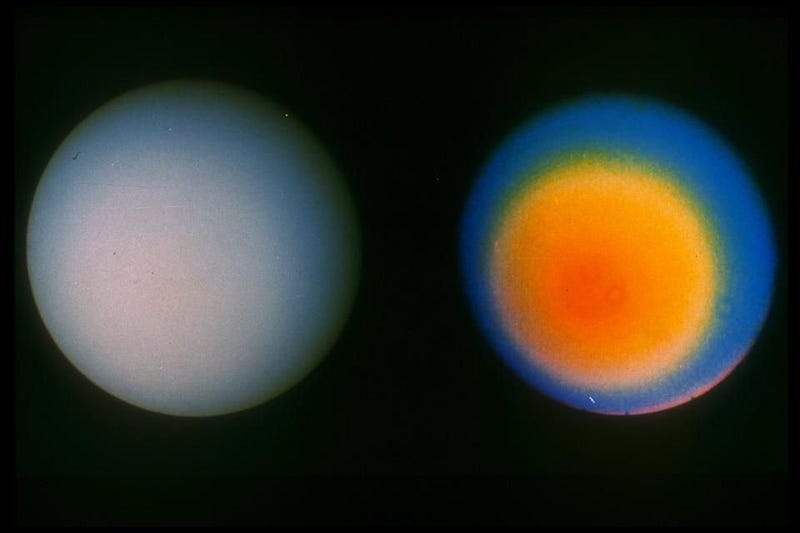
According to astronomer Erich Karkoschka, who did this work back in 2014:
Some of these features probably are convective clouds caused by updraft and condensation. Some of the brighter features look like clouds that extend over hundreds of kilometers. […] The unusual rotation of high southern latitudes of Uranus is probably due to an unusual feature in the interior of Uranus. While the nature of the feature and its interaction with the atmosphere are not yet known, the fact that I found this unusual rotation offers new possibilities to learn about the interior of a giant planet.
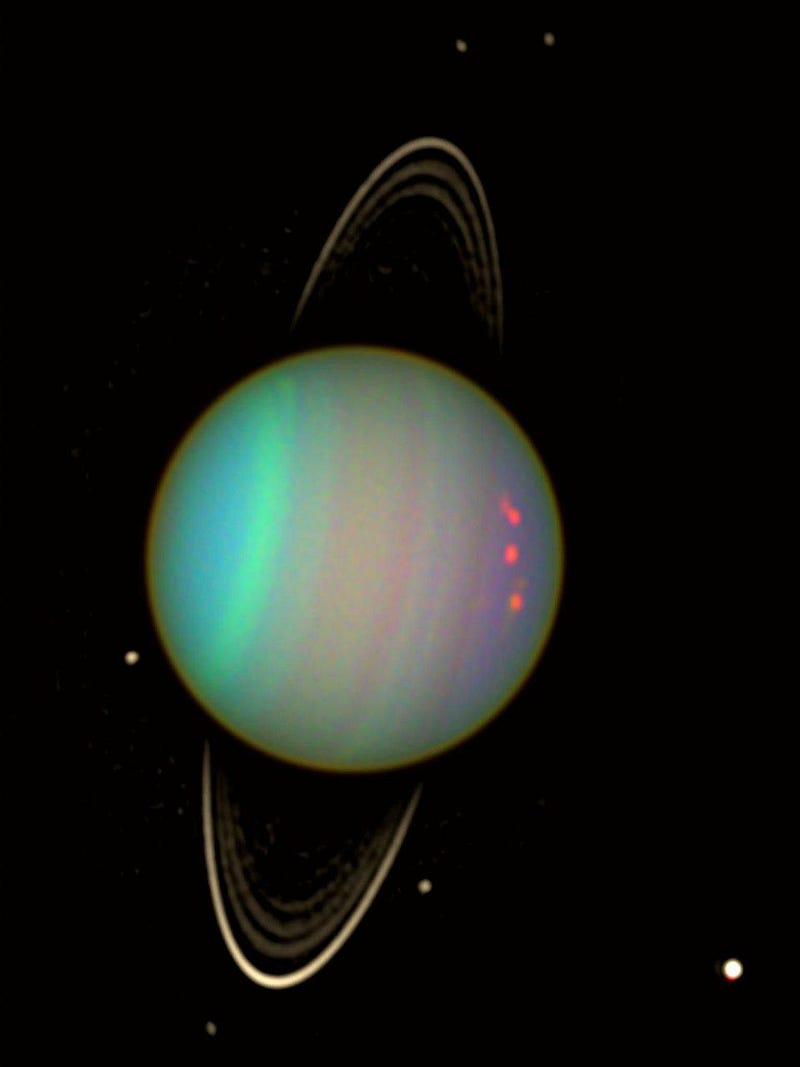
By looking in wavelengths of light beyond what the human eye can see, such as the infrared, we can construct enhanced-color images. As you’d expect, when Uranus is near equinox, these reveal a slew of features that are invisible to the human eye, including:
- bands of atmospheric structure,
- hemispheric differences between the sun-facing and space-facing poles,
- storms and clouds present in the upper atmosphere,
- and even a faint ring system that likely results from shattered or tidally-disrupted moons.
There are also storms that are visible only in the infrared that intensify and subside. Contrary to our initial observations, Uranus is a feature-rich world, but only if you look at it in the right ways.
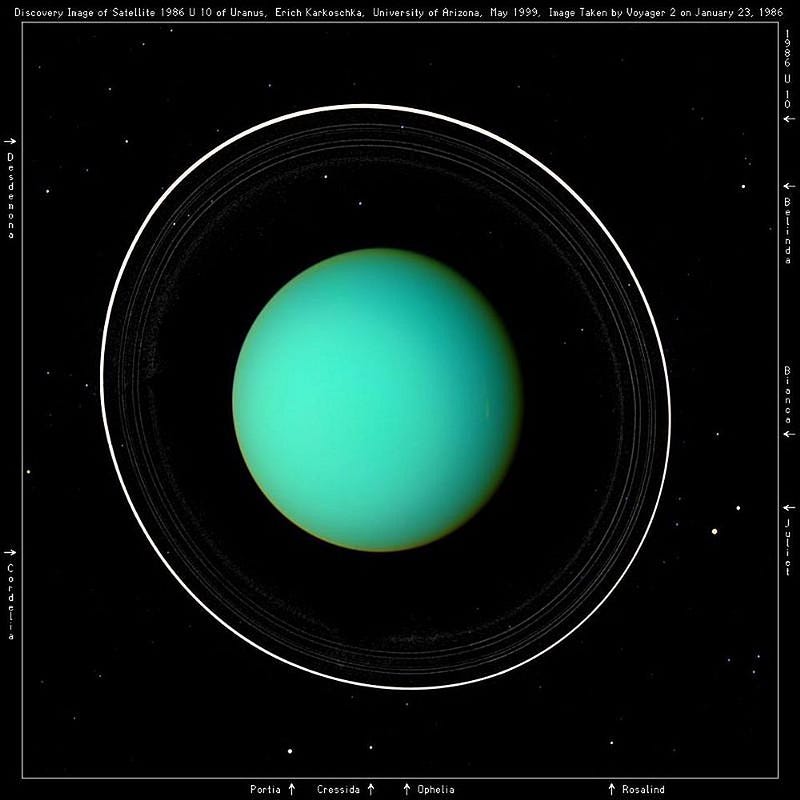
There are still plenty of mysteries to solve about the second-most-distant planet in the Solar System. Uranus has an oddly tilted but strong magnetic field, about 50 times the strength of Earth’s, which rotates like a corkscrew around the planet. The dual presence of carbon and hydrogen suggests that, in the lower layers of the atmosphere, the pressure causes a rain of diamonds to fall. Uranus displays a uniform temperature during solstice, but severe temperature differences across its surface during equinoxes, suggesting that something inherent to it is causing a lag between temperatures and the seasons. And the storms we see, also driven by the seasons, are suggestive of a vortex deeper down in the atmosphere, farther past what we can see.
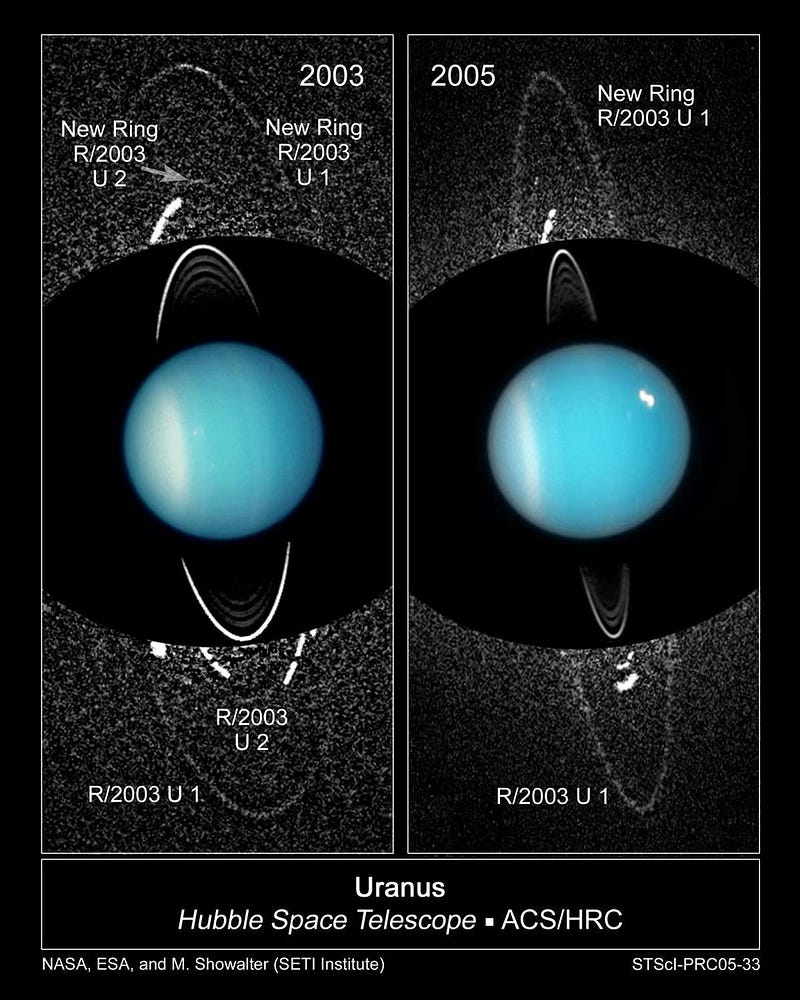
Uranus, to many, is still the most boring planet, and I suppose that’s true if you’re willing to add a caveat: sometimes. When Uranus is at solstice, it truly is the most boring, featureless world you can find among our eight planets. But the lack of an internal heat source and the fact that it rotates on a tipped-over axis also gives us a unique opportunity to learn how a gas giant planet behaves when its energy balance is driven by the Sun.
Uranus, once thought to be a featureless world, turns out to be incredibly rich and diverse. This turquoise world holds a number of mysteries that are suggestive of a complex, internal structure beneath the easily-observable upper atmosphere. So long as there’s an energy difference, either between the polar hemispheres or between the day-and-night sides, there will surely be interesting phenomena to investigate. The case for a dedicated mission to Uranus has never been stronger.
Ethan Siegel is the author of Beyond the Galaxy and Treknology. You can pre-order his third book, currently in development: the Encyclopaedia Cosmologica.




